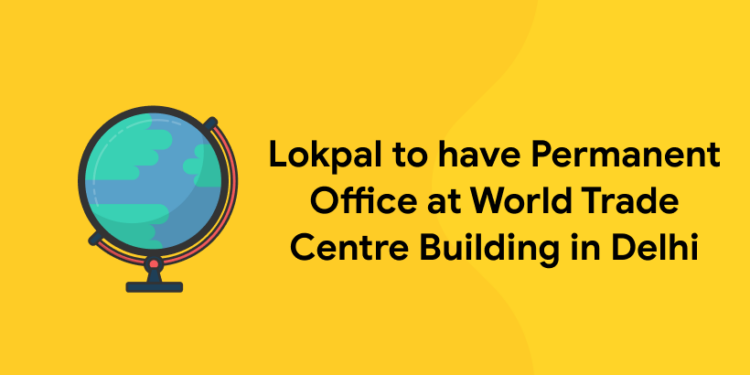Table of Contents
In the recent news you might have heard about the establishment of permanent office at world trade centre building in Delhi. The news may be so fascinating if you could remember the milestone of enactment of Lokpal and Lokayuktha. The agelong struggles of the renowned leader Anna Hassare may make you remember about the hardship and news celebration about the creation of Lok Pal. It’s been 4 years after the creation of Lokpal which is the ombudsman of corruption and public administration, to have permanent building for its function. I don’t know its matter of celebration or worthful matter or a matter of discussion and criticism, but it’s a matter to revisit the milestones in the creation of Lokpal in India. Through this blog let us look into the history overview and current developments of Lokpal.
Register in to get the latest Exam Study Materials, PDFs, Video Lessons, Mock Tests! Limited Offer!
The History and Overview of Lokpal.
Lokpal is the new form of corruption and public administration ombudsman. Ombudsman is an official appointed to investigate the complaints and to observe the functions of the organization or company or whatever the ombudsman be. The banking ombudsman is very popular in its function and establishment. The ombudsman regarding the governance and public administration and the observance of corruption among the same is entrusted with the duty of Lokpal which is the ombudsman created under the Lokpal and Lokayuktha Act of 2013. Even though the legal authority of the Lokpal came into existence in 2013, the history regarding the same has been ranging from over half a century of time.
History of Lokpal
The birthplace of the ombudsman is Sweden. The concept has got wide acceptance and adaptation after the second world war. New Zealand and Norway adopted the system of ombudsman in 1962. But it doesn’t have any historical value as the significance of the country was small at that time. Based on the recommendation of the Whyatt Report of 1961, Great Britain adopted the system of ombudsman in 1967. This adaptation has got wide and large significance as Britain was the largest empire in the world and is the most significant country in the world which professed the democracy and parliamentary system of government. So, the ombudsman for a parliamentary democracy got wide acceptance in the world. India, where the nation’s polity and governance is largely influenced by the Britain model has also started to adapt the ombudsman concept. The first initiation was done by the then minister of parliament Shri Ashok Kumar Sen in the early 1960s to introduce the ombudsman in parliament. Even though the world started to adopt the concept of ombudsman the term Lokpal instead of ombudsman was coined by Dr. L. M. Singhvi who was a renowned lawyer and politician. So, Lokpal is the legal adapted form of the Ombudsman concept in India. but even though the term has been coined, the initiation of the concept has been introduced in the parliament, the Lokpal hasn’t got a legal authorisation swiftly. The early form or infant of the Lokpal is the two committees set up by the First administrative reforms commission in 1966 for central and state level. In 1968 the Lokpal bill was passed in Lok Sabha but lapsed in the upper house. Several attempts were made to enact the law but got rejected due to various reasons over a decade. Due to the failure of enactment of the said bill, an activist called Anna Hassare led a sathyagraha for the enactment of the said act. This has put a lot of pressure on the legislature to enact the act. In 2013 Lokpal and Lokayuktha Act was enacted. On March 19, 2019, Justice Pinaki Chandra Ghosh was appointed as India’s first Lokpal along with eight other members. According to the 2020-21 annual report of the Lokpal of India, in the beginning it functioned from a temporary office at the Ashok Hotel in Chanakyapuri. Now Lokpal of India will finally move into a swanky office at World Trade Centre in south Delhi’s Nauroji Nagar, spread over an area of 59,504 square feet, the office comprising two floors, has been purchased for ₹254.88 crore.
Lokpal Composition
Lokpal consists of a chairperson and 8 members out of whom 50% are judicial members. The said members and the chairperson are appointed by the president of India by warrant under his hand and seal. The tenure of the office of the members is 5 years or 70 years of age, whichever is earlier. The salary and allowances of the members are same as that of the chief justice of India.
The Lokpal will have two branches namely:
- Administrative Branch
- Judicial Branch
Administrative branch will lead the following functions such as Inquiry/ Investigation branch to be headed by an officer not below the rank of Additional Secretary to Govt of India, Prosecution wing to be headed by an officer not below the rank Additional Secretary to Govt of India, Central Registry, Scrutiny wing, Establishment, Coordination, Media and Publication, Budget, Finances and Accounts.
The Judicial Branch will assist the Lokpal in disposing of their judicial functions.
Register in to get the latest Exam Study Materials, PDFs, Video Lessons, Mock Tests! Limited Offer!
Conclusion
1: Who was the first woman President of India?
Giving a permanent office at the world trade center may be a reminder to remember all the milestones associated with the enactment and establishment of Lokpal, the ombudsman for corruption and the good governance and public administration. From a competitive exam point of view the news may give you only the answer to the question where the office of the Lokpal is situated. But the blog related to it may give you answers to all the queries and questions related to the subject of Lokpal. Study with Entri and crack any competitive examination. Keep studying, keep winning.













